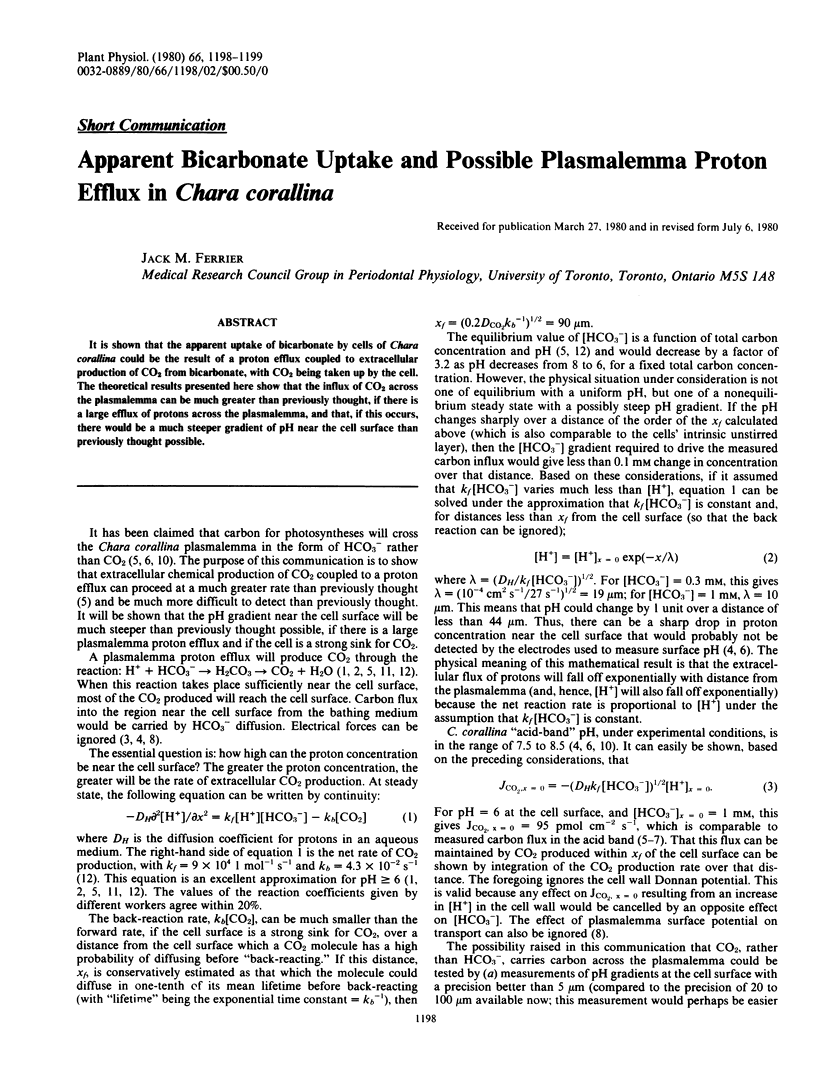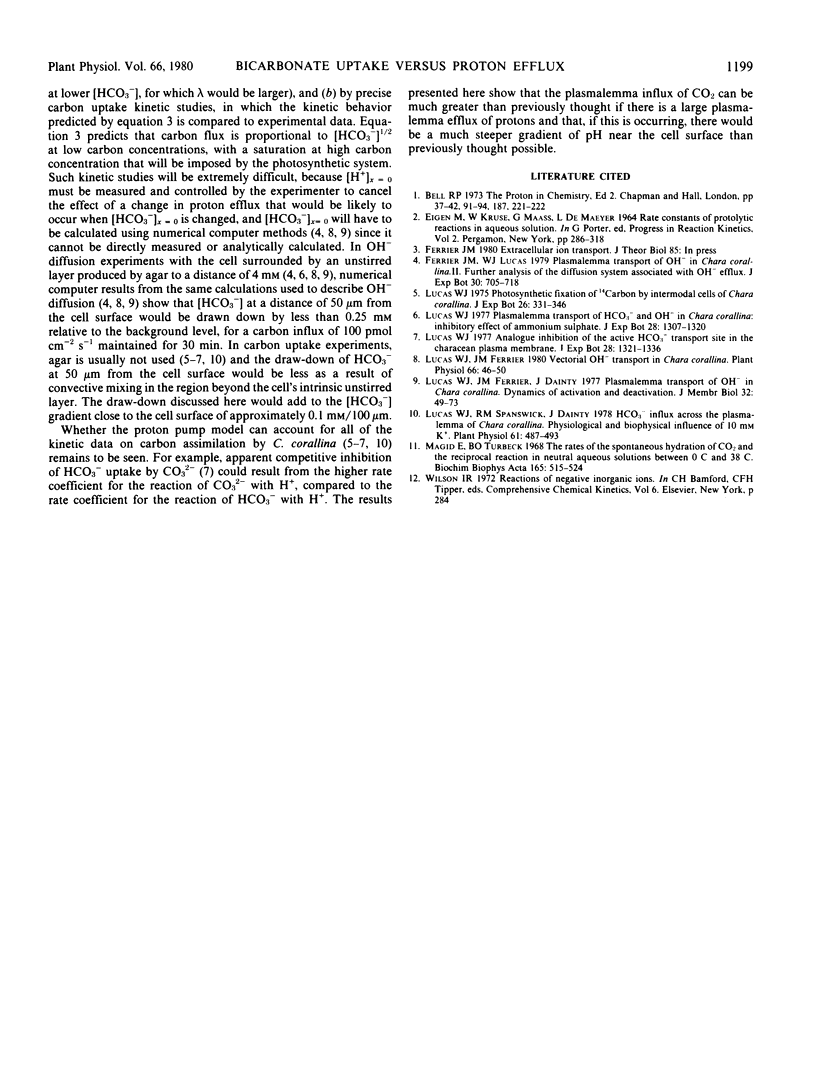Abstract
It is shown that the apparent uptake of bicarbonate by cells of Chara corallina could be the result of a proton efflux coupled to extracellular production of CO2 from bicarbonate, with CO2 being taken up by the cell. The theoretical results presented here show that the influx of CO2 across the plasmalemma can be much greater than previously thought, if there is a large efflux of protons across the plasmalemma, and that, if this occurs, there would be a much steeper gradient of pH near the cell surface than previously thought possible.
Full text
PDF

Selected References
These references are in PubMed. This may not be the complete list of references from this article.
- Lucas W. J., Ferrier J. M., Dainty J. Plasmalemma transport of OH- in Chara corallina: dynamics of activation and deactivation. J Membr Biol. 1977 Apr 7;32(1-2):49–73. doi: 10.1007/BF01905209. [DOI] [PubMed] [Google Scholar]
- Lucas W. J. HCO(3) Influx across the Plasmalemma of Chara corallina: Physiological and Biophysical Influence of 10 mm K. Plant Physiol. 1978 Apr;61(4):487–493. doi: 10.1104/pp.61.4.487. [DOI] [PMC free article] [PubMed] [Google Scholar]
- Lucas W. J. Plasmalemma Transport of OH in Chara corallina: III. FURTHER STUDIES ON TRANSPORT SUBSTRATE AND DIRECTIONALITY. Plant Physiol. 1980 Jul;66(1):46–50. doi: 10.1104/pp.66.1.46. [DOI] [PMC free article] [PubMed] [Google Scholar]
- Magid E., Turbeck B. O. The rates of the spontaneous hydration of CO2 and the reciprocal reaction in neutral aqueous solutions between 0 degrees and 38 degrees. Biochim Biophys Acta. 1968 Oct 15;165(3):515–524. doi: 10.1016/0304-4165(68)90232-8. [DOI] [PubMed] [Google Scholar]


